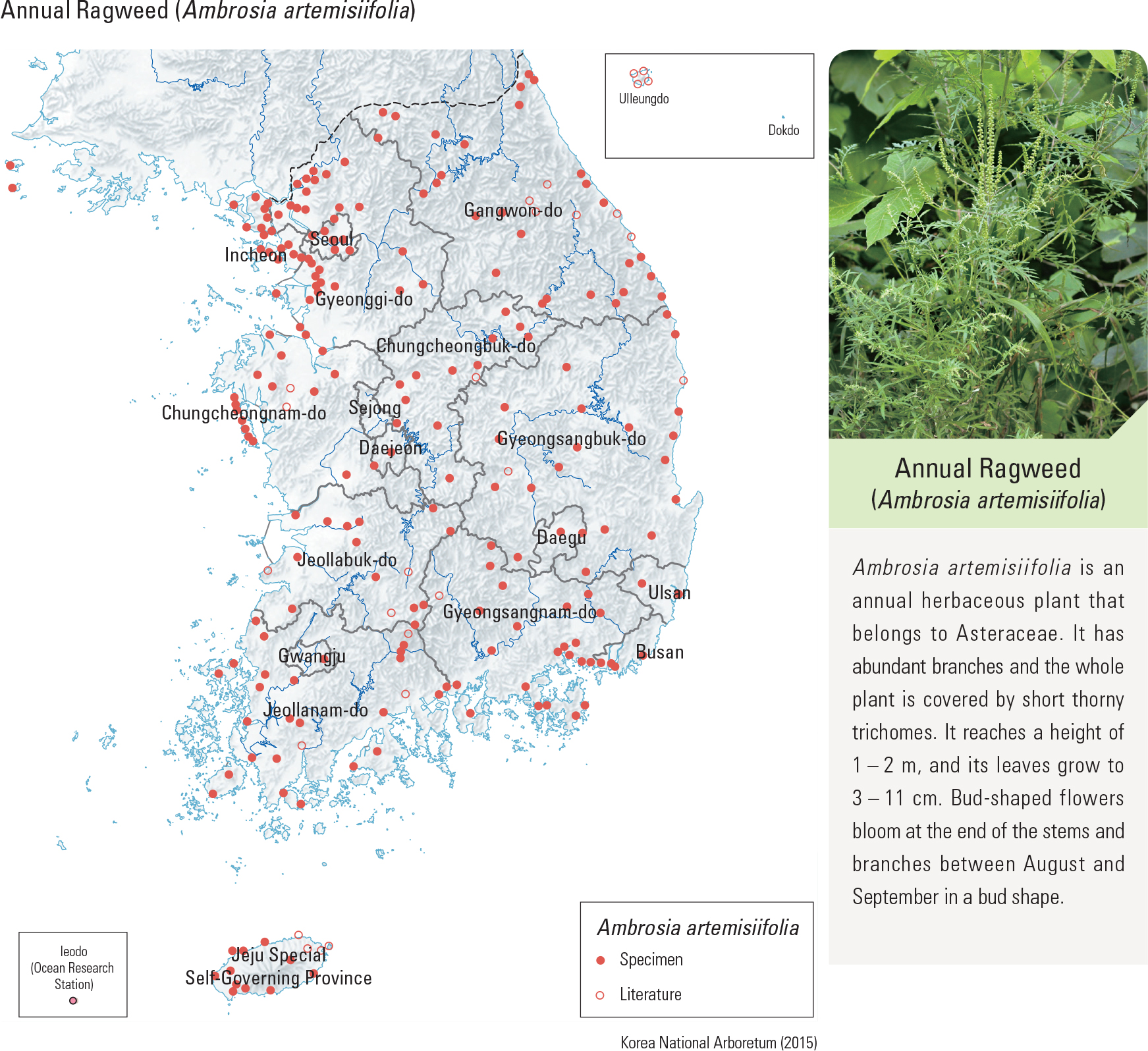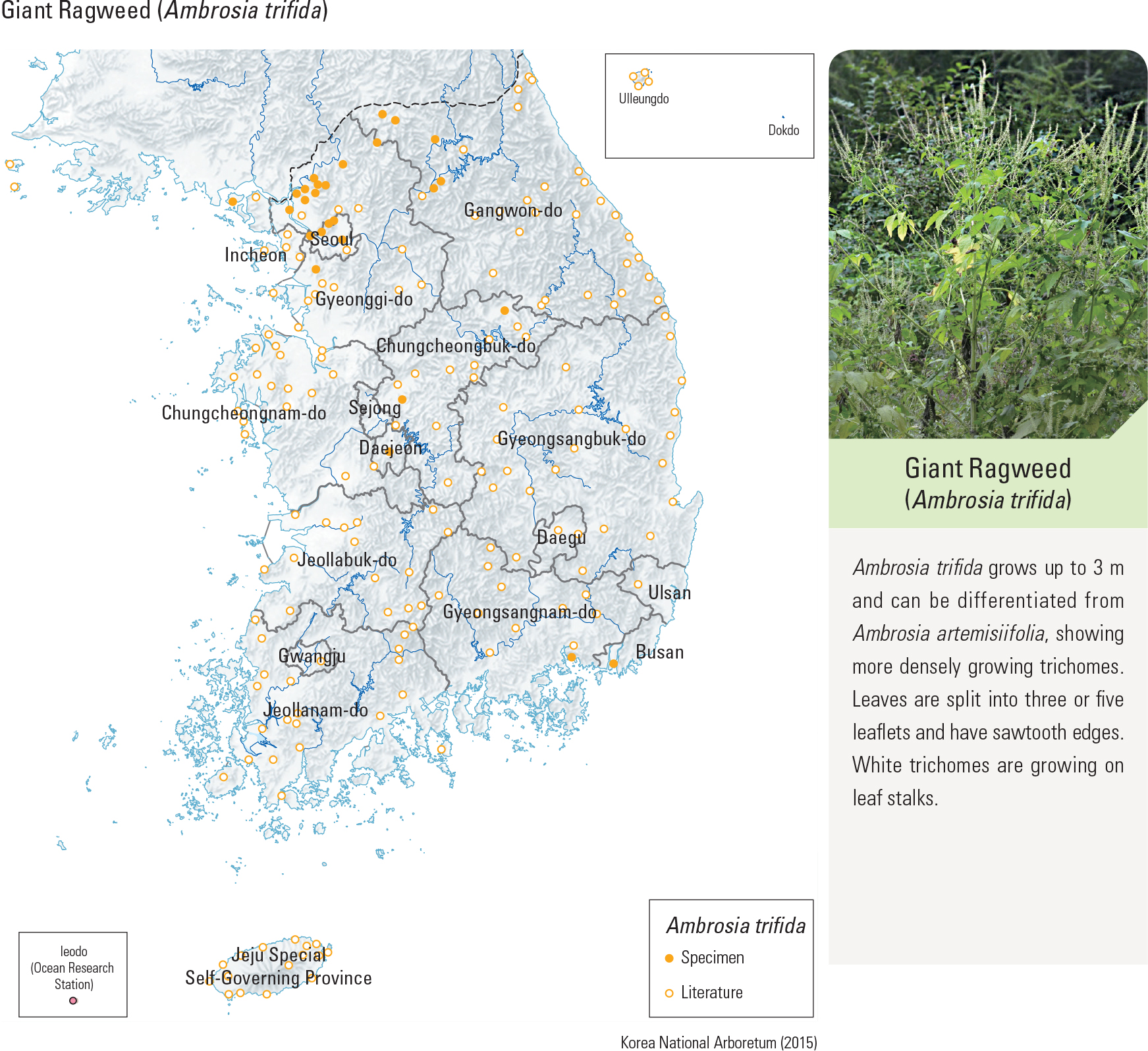English II
Naturalized plants are species that have been introduced from outside of the country by anthro- pogenic or natural factors, and have successfully adapted to the natural ecosystem. Due to recent rapid industrial development, international migra- tion and trade have become active, followed by an increase in the number and distribution areas of naturalized plants. 321 naturalized plants had been recorded by 2010. Many of the naturalized plants have originated from Europe and America. Taxonomically, Asteraceae are the most abundant, followed by Poaceae, Brassicaceae, and Faba- ceae. Most are annual rather than perennial, and herbaceous rather than woody. As woody plants have a longer life cycle and slower growth speed, they are less adaptive to new environments and are distributed around a limited range. In general, naturalized plants have a short vegetative growth period and long reproductive growth period to adapt to various environments, generating and scattering many seeds. Moreover, naturalized plants are mostly heliophytes, grow- ing well under direct sunlight in urban areas, roadsides, riverbanks, barren land, agricultural land, and forest roads. Some naturalized plants such as buffalo-weed (Ambrosia tri da), red ow- er ragleaf (Crassocephalum crepidioides), and white snakeroot (Ageratina altissima) are scio- phytes, growing well in shaded forests. As naturalized plants inhabit the habitats of Korean native plants, native plants can become exposed to extinction from the decrease of hab- itats and unavailability to reproduce by being fertilized with other similar plants. Infertile indi- viduals or crossbreeds may be produced, harming the genetic resource of native plants. Moreover, naturalized plants cause harm to people and live- stock, growing as weeds on agricultural lands and reducing crop yields. Continuous observation and monitoring upon introduction is required for a systematic management of naturalized plants. In South Korea, surveys of introduced species and their distribution by their introduction routes have been conducted, in addition to the construction of a basic database through invasive species assess- ment for the management of naturalized plants.
page_2 |



